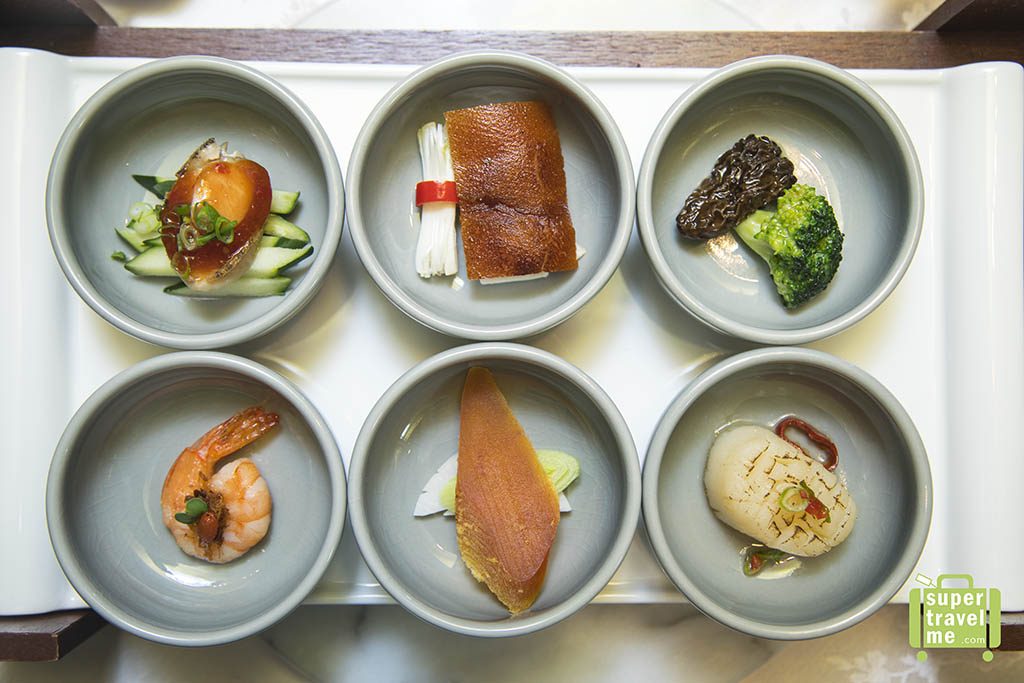
Taipei is a city of amazing cuisine. A recent visit to the capital of Taiwan introduced us to Silks Palace at the National Palace Museum. Guests here are presented with an extraordinary experience with dishes that resemble some of the Imperial Treasures exhibits at the National Palace Museum next door.
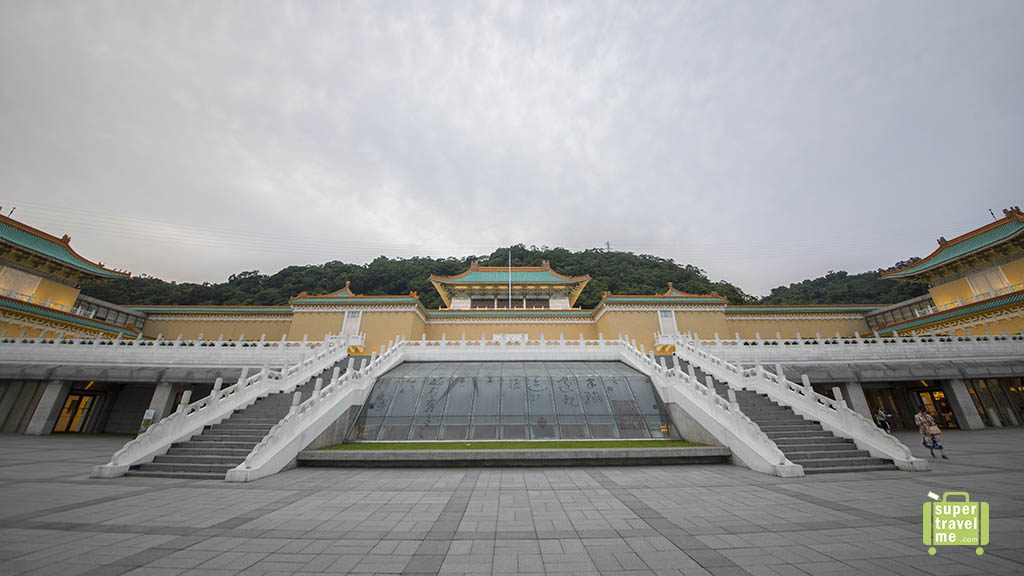
The National Palace Museum look spectacular from the outside. In the museum, close to 700,000 pieces of ancient Chinese imperial artefacts and artworks are on display. If you have not been to the museum, we recommend you head to the museum first before completing the full experience at Silks Palace.
The museum is open every day from 8.30am and closes at 6.30pm from Sundays to Thursdays and at 9pm on Fridays and Saturdays.
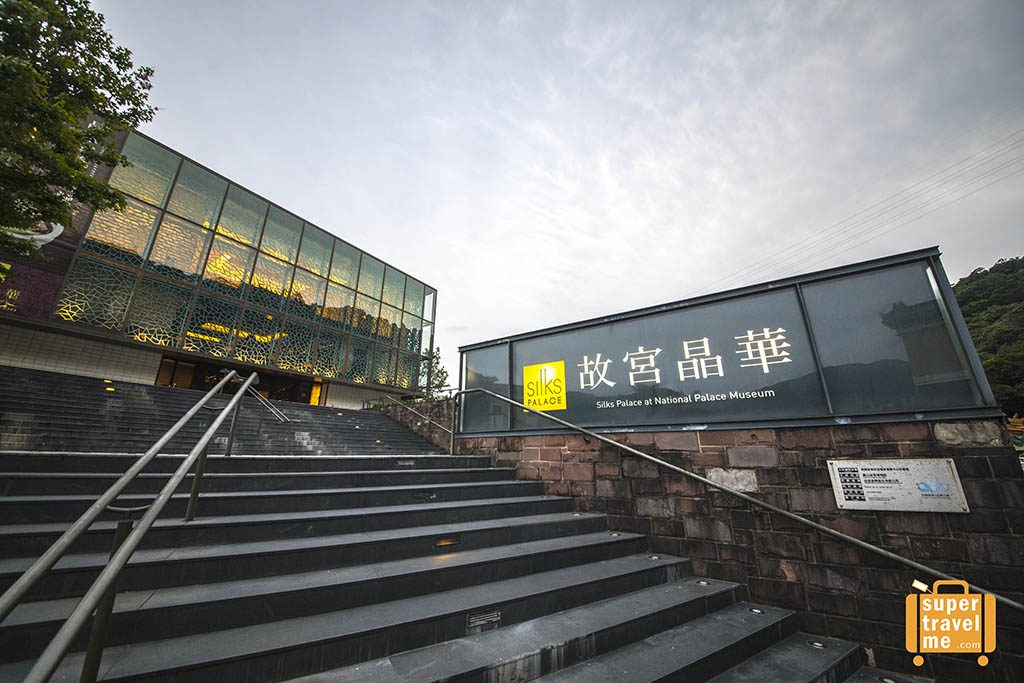
Five distinct levels of dining are available at Silks Palace. Step into level one into the open space restaurant which serves both lunch and dinner from 11.30am to 9pm daily. The second floor is where the private rooms are located. Enjoy fine dining The third floor is equipped with facilities for larger banquets. There is a basement two cafeteria that offers Taiwanese food and culture.
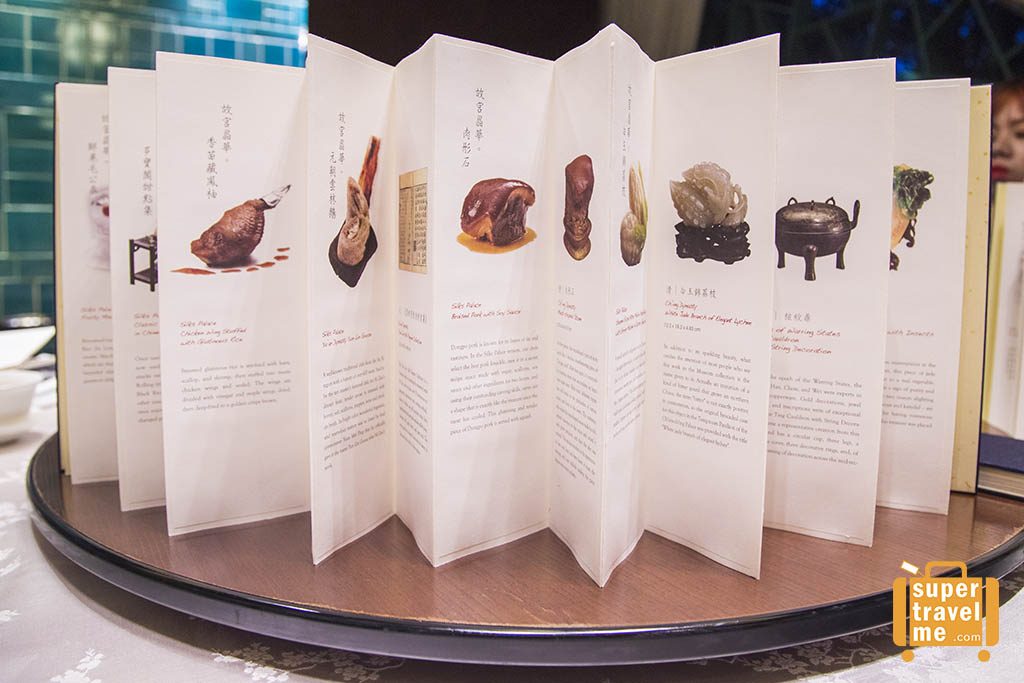
The National Palace Museum Imperial Treasures Feast menu features eight dishes. This menu opens up like an accordion featuring the eight dishes and corresponds with the exhibits from the museum. And guests have the option of purchasing this menu as a souvenir.
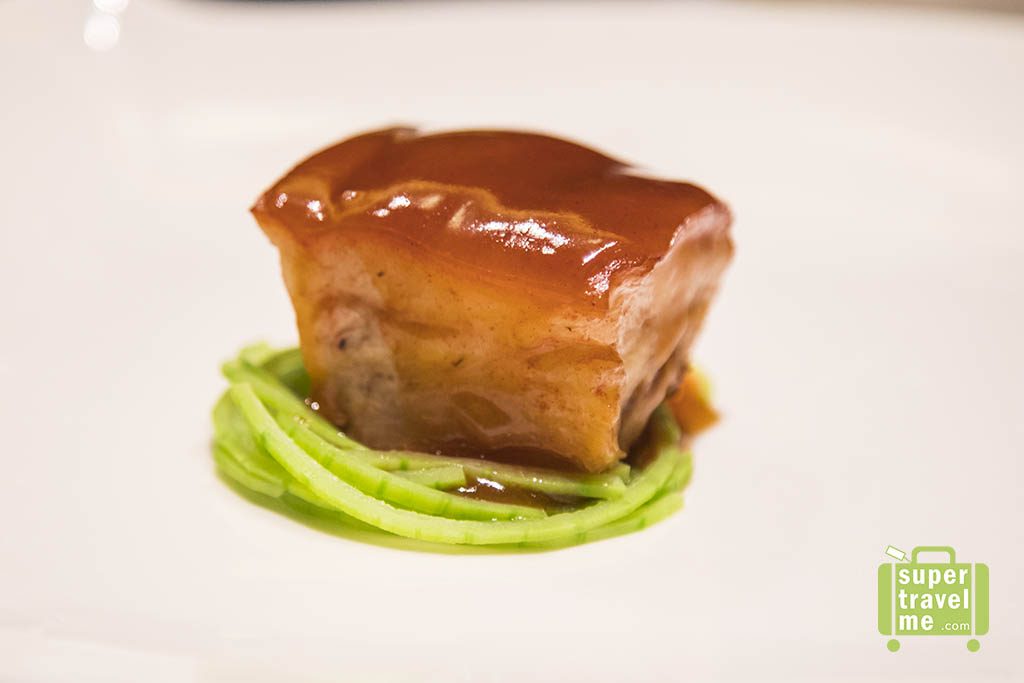
The tasty layers of fat from Silks Palace’s Dongpo meat from the pig’s knuckle is stewed in a sauce of sugar, scallions, soy sauce and other ingredients for two hours. It is then carved out and shaped like the Ch’ing dynasty Meat-shaped Stone. The meat is served over a bed of Shanghainese vegetable rice. I am still marvelled at the Meat-shaped agate stone that is exhibited at the museum. It has accumulated its layers over many years while impurities produce the various colours and hues to the layers. It was carved with great precision and then the skin was stained giving it the appearance of skin and lean and fatty layers of meat, the veining and hair follicles.
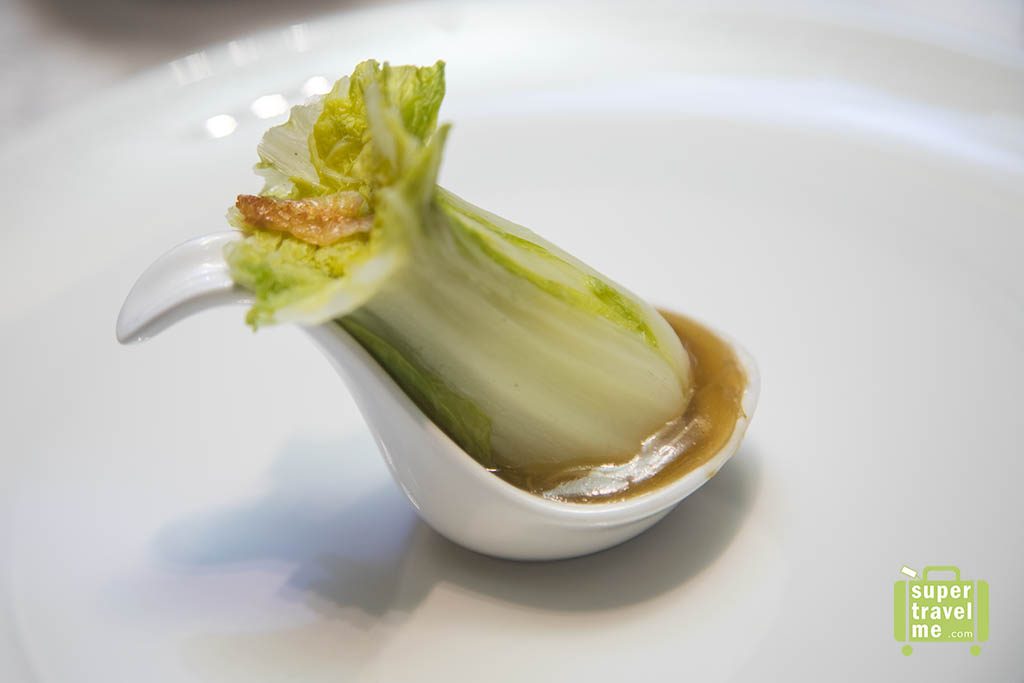
The Ch’ing dynasty Jadeite Cabbage with Insects is one of the museum’s most famous exhibit. The jade looks so similar to the real bok choy cabbage which symbolises purity and auspiciousness. The locust and katydid on the leaves depict having numerous children hence it became the treasure that was placed in the Forbidden City. Bok choy sum or Chinese cabbage heart from mid-Taiwan are boiled in a broth of chicken and ham and served with dark broth sauce. Thank goodness, the insects in the dish are replaced by sergestid shrimps.
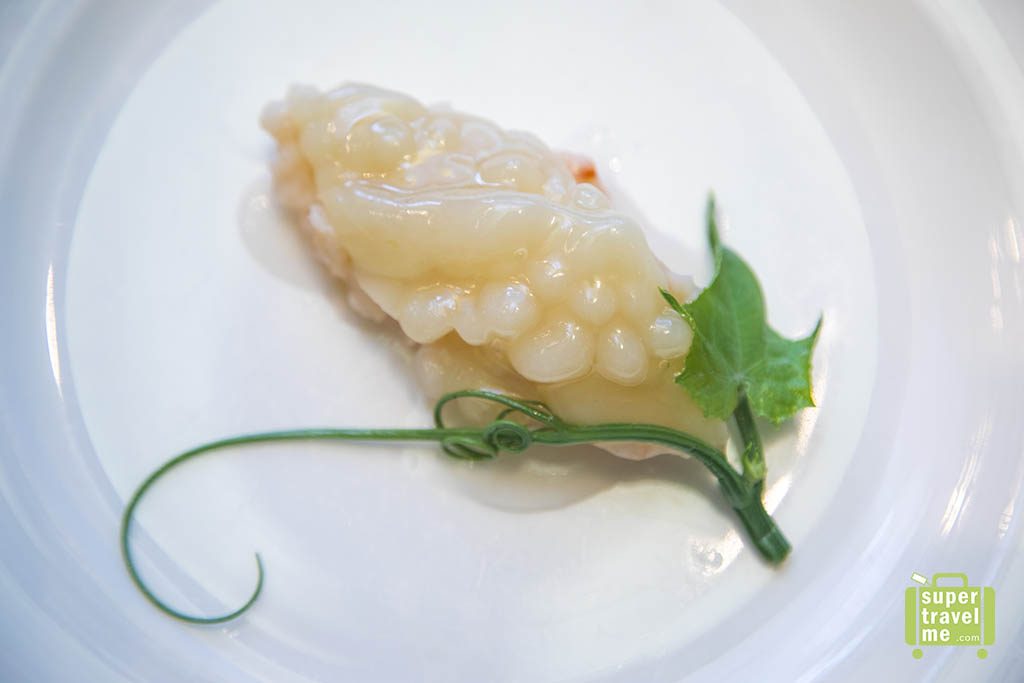
The apple bitter melon is a vegetable that is indigenous to Taiwan. Resembling the White Jade Branch of Elegant Lychee exhibit, this dish has a sweet taste and is served cold with a spicy Japanese mustard sauce. The artwork in the museum is an imitation of a kind of bitter gourd that grows in northern China. “Elegant Lychee” is another name for “bitter gourd” but because bitter does not have a positive connotation, the original brocaded case for this object in the Tung-nuan Pavilion of the Ch’ien-ch’ing Palace was given the title “White jade branch of elegant lychee”.
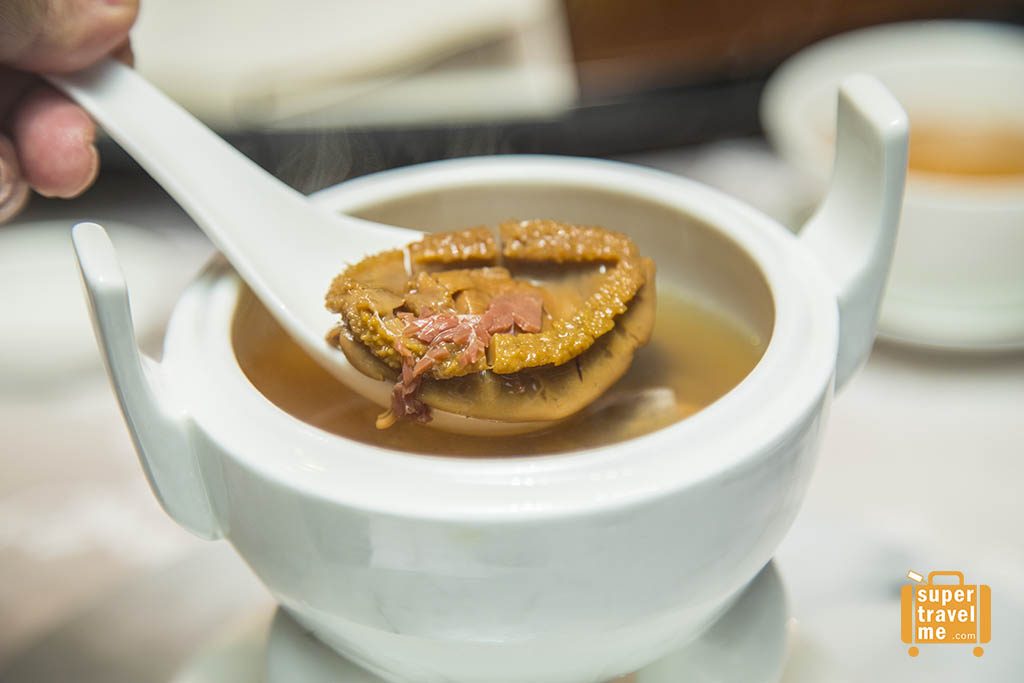
The Buddha’s Tureen in Ting Cauldron with String Decoration resembles the 17cm-tall Epoch of Warring States Ting Cauldron with String Decoration. Commonly known as Buddha Jumps Over The Wall, this dish takes two days to create. The rich taste of this soup comes from ingredients such as chicken broth, quail eggs, bamboo shoots, scallops, sea cucumber, abalone, chicken, Jinhua ham, pork tendon, mushrooms, taro and sharks fin melon.
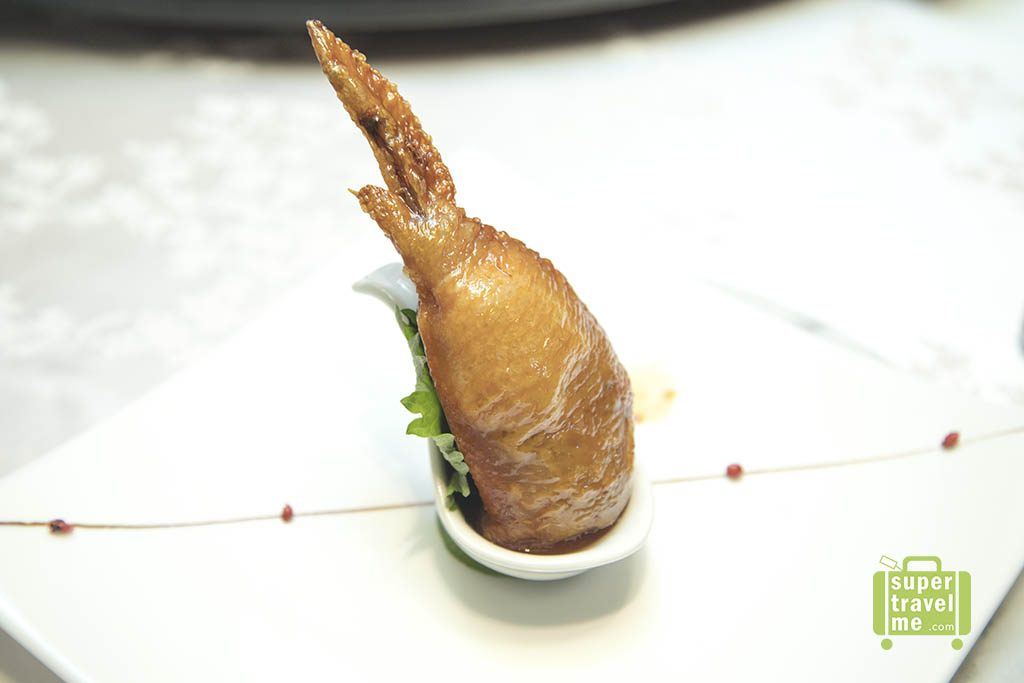
The Chicken Wing Stuffed with Glutinous Rice dish is delicately prepared. First the steamed glutinous rice is stir-fried with ham, cilantro, scallop and shrimp. They are then stuffed into chicken wings and sealed. Vinegar and maple syrup are drizzled onto the wings before drying and deep-fried.
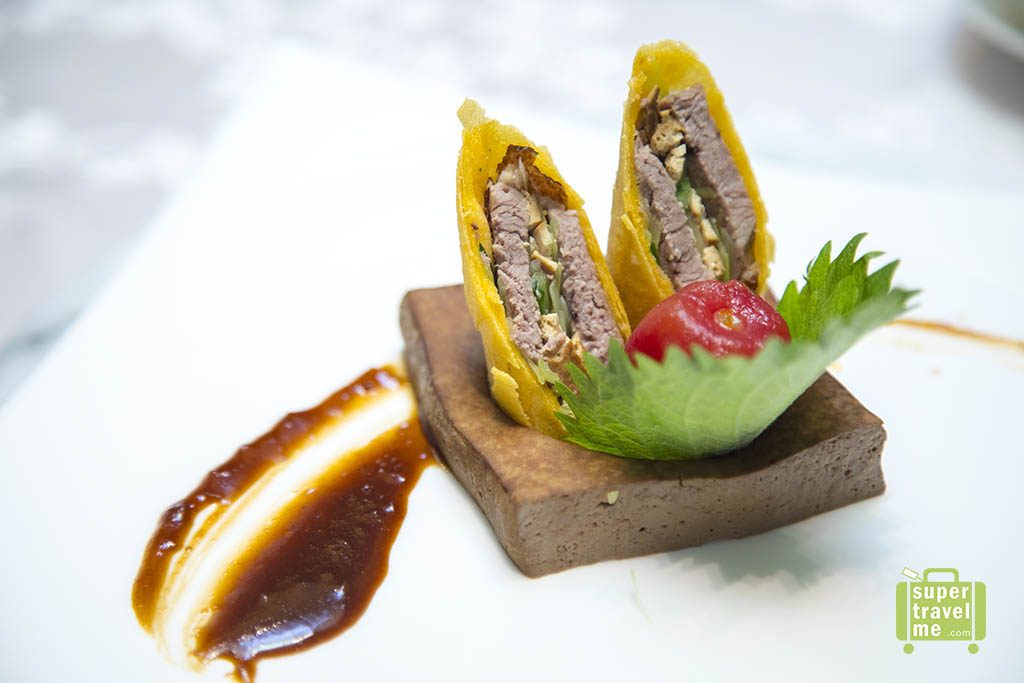
I guess you could call Yun Lin Hall Regime Collection the cookbook of the Yu’an dynasty. The work of renowned artist Ni Zan has painted over 50 instructions on preparing ingredients and cooking methods such as grilled goose, shrimp roll, pig’s head, tasty crab. Yu’an Dynasty Yun Lin Goose is a traditional dish from the Su Xi region with a history of more than 600 years. The goose is steamed with honey, salt, scallions, peppers, wine and chicken broth.
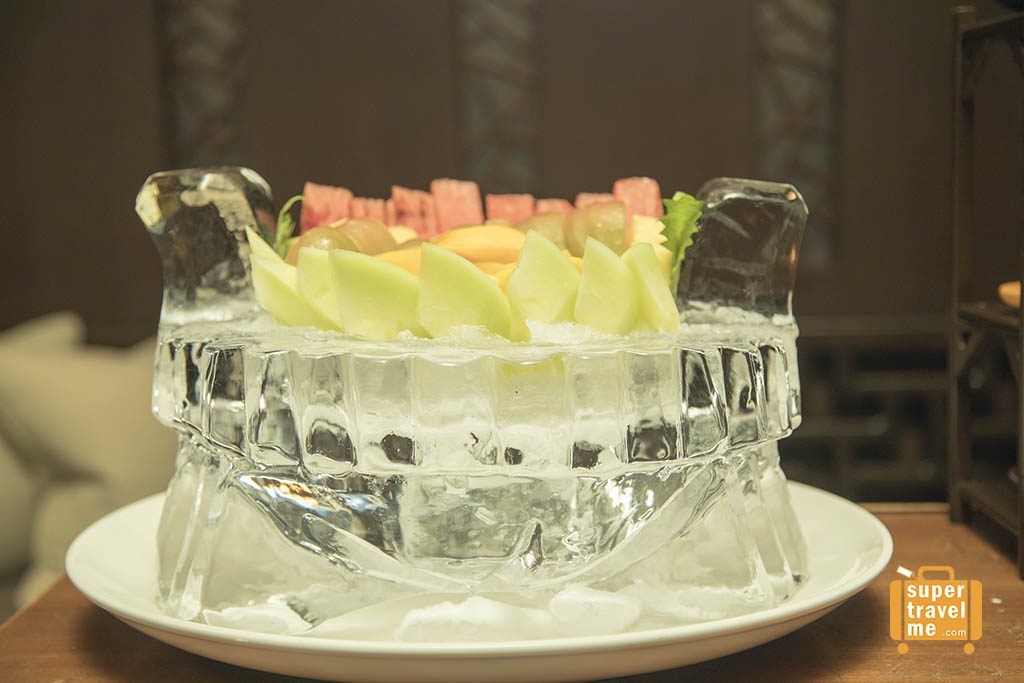
Mao-Kung Ting Caudron from the Late Western Chou period has a wide, flared mouth, a linked ring motif decorating the rim, upright handles and three hoofed feet. Local Taiwanese fruits on the Fruity Mao-kung Ting fruit platter at Silks Palace are presented on an ice-sculpture cauldron recreated by ice-sculptor and award winning chef Kuo Jin Long from Grand Formosa Regent Taipei.
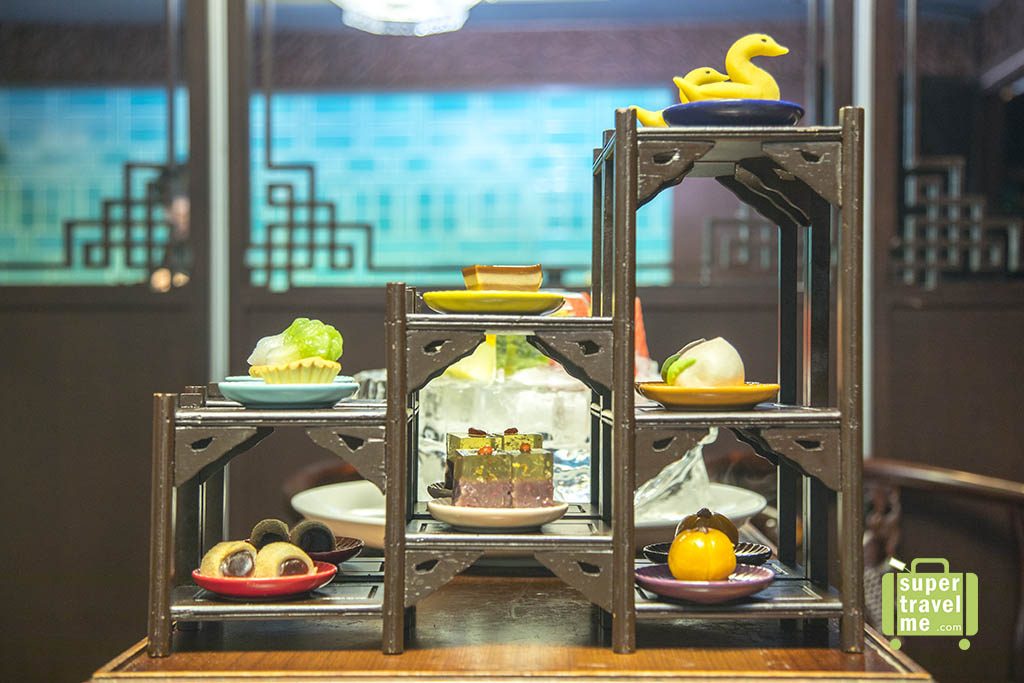
The Ch’ing dynasty Bamboo-veneered Curio Box with Lotuses is a round curio box joined by bamboo thread and a “chu-huang” bamboo veneer, carved with lotus. The four fan shaped quadrants of the body spread out so they stand end to end in a straight line. They can also be turned around 360 degrees so that they form a square display box. The chef at Silks Place have created curio-like snacks such as red bean pastries, bird’s nest egg tart which by the way are my favourite, Donkey rolling (a red bean and glutinous rice snack), yellow soybean snack, and many others that were once enjoyed and adored by the emperors.
For NT$3,800 per person, you will enjoy round trip transfers from the lobby of Regent Hotel Taipei to the National Palace Museum and back to Regent Hotel Taipei, an audio tour of the National Palace Museum, Silks Palace Imperial Treasure Feast and history expert fee and a special souvenir.
Silks Palace at National Palace Museum is located at 221 Chishan Road Section 2, Shilin, Taipei. Tel: +886 2 2882 9393

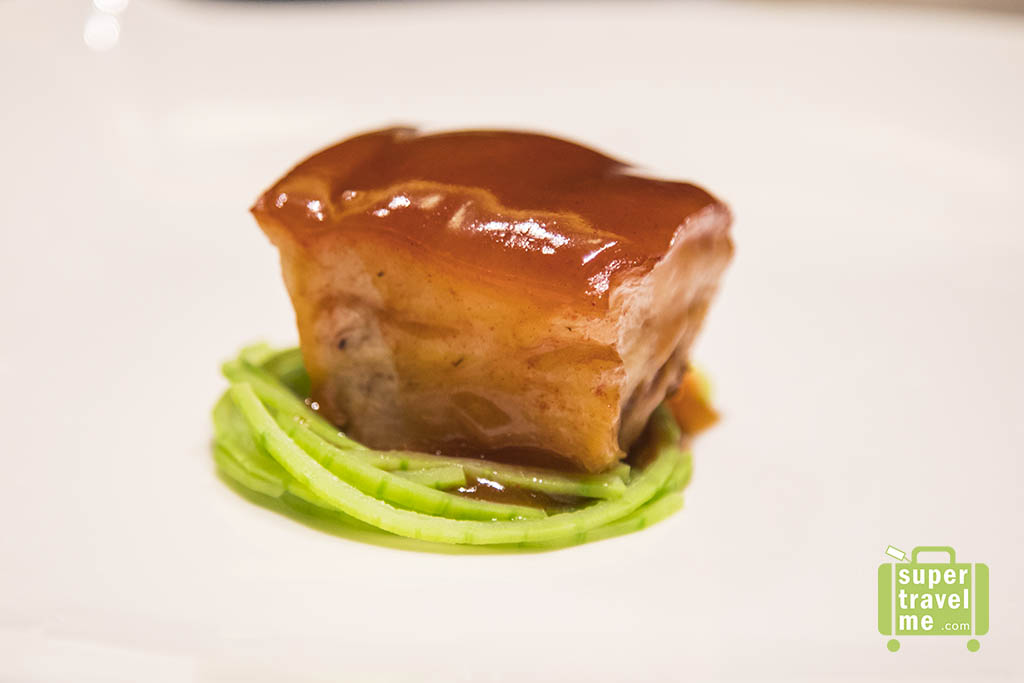

Pingback: Changi loses Skytrax Best Airport in The World Title to Hamad International Airport | SUPERTRAVELME.com